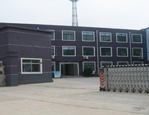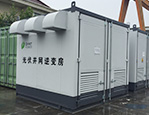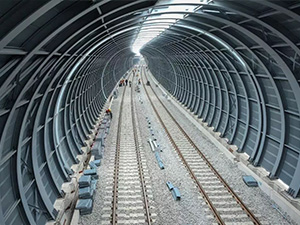Noise reduction laboratory engineering
Publish date:2018-06-27 Views:720

Basic concepts of an anechoic room (or a semi anechoic room)
Anechoic room (or semi anechoic room) is a very important experimental place for acoustic experiment and noise testing. It is not only a special laboratory of acoustic testing, but also an important part of the test system. In fact, it is also one of the acoustic testing equipment. The acoustic performance index directly affects the accuracy of the test. The anechoic chamber (or semi anechoic chamber) is used to provide a low noise test environment for free space or half free field for acoustic testing. Its sound absorption processing is mostly used with sound absorption and flat plate resonance sound absorption structure, which is called the full sound absorption room, which is called the sound clearing room. It is called semi anechoic room in the six sides of the room, which only spread on five or four sides.
The basic points of the scheme design of the noise reduction room
1.Determination of the parameters of the anechoic room
The shape is determined mainly according to the use situation, usually in the form of rectangle. The shape of the building in the noise chamber is almost without the shape of ball, column or arc. Size and size are mainly based on the size of the tested parts and the test distance. It has a certain relationship with the size, cut-off frequency, background noise, ambient noise and vibration, and the wall absorption coefficient. It needs to be considered in the process of design.
2, sound insulation design in anechoic room
Sound insulation mainly meets the background noise requirements of anechoic room (semi anechoic room), and is related to the test object and the ambient noise. The structure of the double wall "house house" is generally adopted. The outer wall can usually be made of clay bricks, high density solid cutting blocks, etc.
3, vibration isolation design of anechoic chamber
In order to separate the surrounding sound from the solid sound transmission, it affects the anechoic chamber. The inner wall and the ground adopt the elastic structure of the floating floor for vibration isolation. The floating structures usually use vibration isolators and vibration isolation pads to suspend all six surfaces of the anechoic room and isolate vibration.
4, sound absorption design of the anechoic room
According to the basic data of the free field radius and the cut-off frequency, the sound absorption structure is designed. Usually, the sound absorption structure has a plane strong sound absorption structure and a split sound absorption structure, usually with a split sound absorption structure. The design of the sound absorption wedge is the decisive factor to ensure the sound field characteristics and the lower limit frequency of the anechoic chamber. The length of the wedge is determined by the cut-off frequency and the 1/4 wavelength theory.
5.Other points
A.sound insulation door: sound insulation door has sound insulation and sound absorption function, which consists of sound insulation door and sound absorption sharp split door. In the design of a muffle room (semi anechoic room), the door is a very important factor. A good sound insulation door should have good sound insulation performance and the most effective edge effect.
B.control room: the design of the control room should take full account of the user's aspects and use functions, and generally choose the installation monitoring system to reduce the human impact on the measurement.
C.lighting, circuit pipelines, etc.: the background noise and acoustic reflection of the lamps used in the indoor lighting need to be minimized, and the consistency and beauty of the overall design of the lamp and the interior should be considered; all circuit tubes, wires and controls are required to be installed after the wedge to avoid sound reflection; the line pipe must meet the required lines and pass through No impact on the test. The pipeline must be acoustically treated through the wall to prevent leakage.
D.other special requirements: the characteristics of the user's industry will bring some special requirements, such as air conditioning system, working condition control, transmission system, ventilation, and so on, must be specially designed according to the specific circumstances.











